Aotearoa has some amazing scenery and hiking or tramping is a great way to see it. However, injuries can happen, and when we get hurt it affects our family, friends, workmates and many others around us too.
Whether you’re planning a short stroll, day walk, or an overnight adventure, we recommend using Plan My Walk before you go.
This free website or app gives you the tools and information you need to plan a safe and successful hike. You can easily find suitable tracks and get track alerts, real user reviews and photos from Plan My Walk's outdoor community, customisable gear lists, MetService weather warnings, and much more!
Before you head out, here are a few tips to help you along the way… First, let’s have a hmmm.
Have a Hmmm Hints - Five Tramping and Hiking tips for Staying Safe
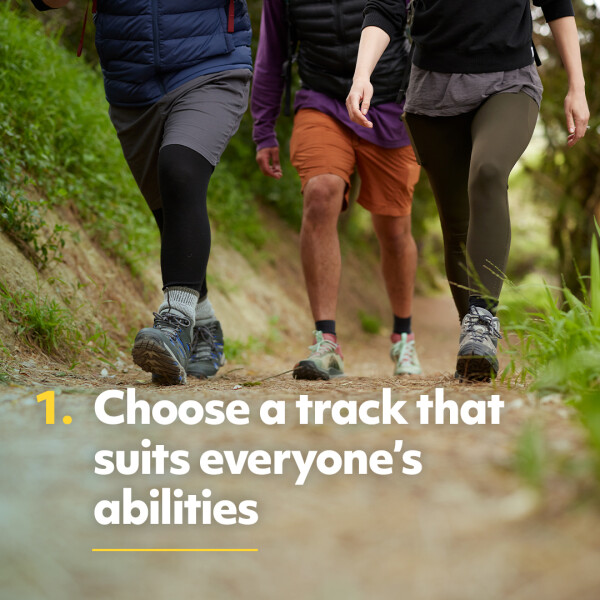
1. Choosing a track that suits everyone's abilities
- If you’re heading out with a group, think about everyone’s abilities. A walk in the park for you could be a challenge for your mate.
- When you are looking at the track options, make sure you consider everyone’s fitness levels and experience in the outdoors.
- Ask yourself: How long will it take to complete your trip? Will you be able to finish it during daylight? Is there a river crossing required? If so, do you and your group know how to do that safely?
2. Keep an eye on the weather
- Aotearoa’s weather can change quickly, so it’s important to check the weather before heading out.
- Weather can make or break a trip! No matter what the weather is, it will impact your trip so be prepared to encounter anything from sun and dry weather, to rain and wind.
- Pay careful attention to MetService weather watches or warnings in the area you’re planning on visiting, and have a Plan B if the forecast changes.
- When packing, consider all types of weather, and pack emergency items in case something unexpected happens, such as needing to stay out for an extra night. Always take a rain jacket and warm clothes, even on a short walk, and a little extra food on an overnight trip.
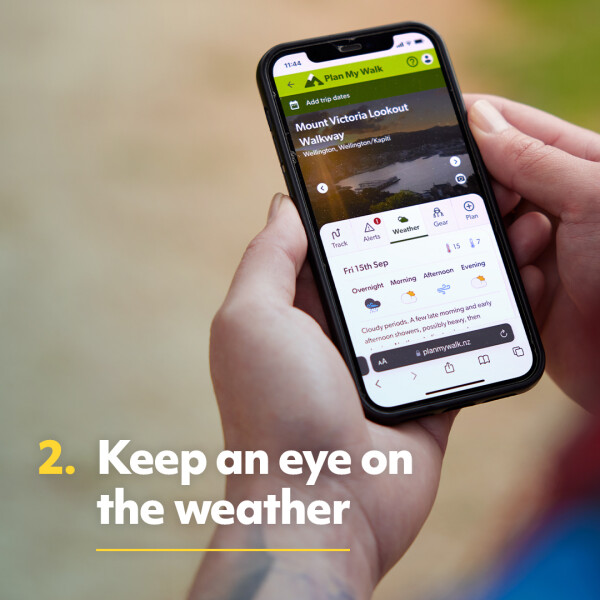
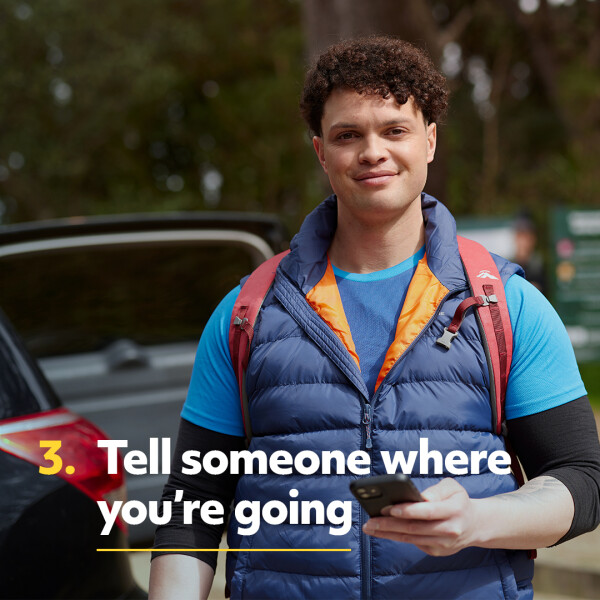
3. Tell someone where you're going
- Before you head out, tell a trusted person where you’re going and when you’ll be back so they can call for help if you’re not back in time.
- You can use Plan My Walk to easily do this - once you’ve make a trip plan, send it to group members and trusted contacts, including your emergency contact.
- Carry a reliable communication device. In some areas, your mobile phone might be ok, however in areas without mobile coverage you’ll need to take a distress beacon.
4. Avoid trips and slips
Most tramping and hiking injuries are caused by slips and trips. You can prevent these by watching out for uneven ground and tree roots and wearing sturdy footwear for support. Here’s four top tips to preventing these injuries:
- Warm up and stretch before you set off
- Consider using walking poles
- Watch where you place your feet
- Take your time over rough or uneven ground, especially heading downhill.
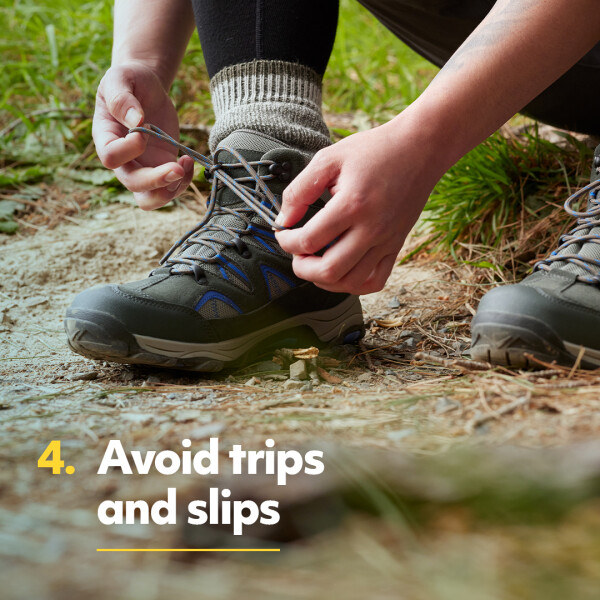
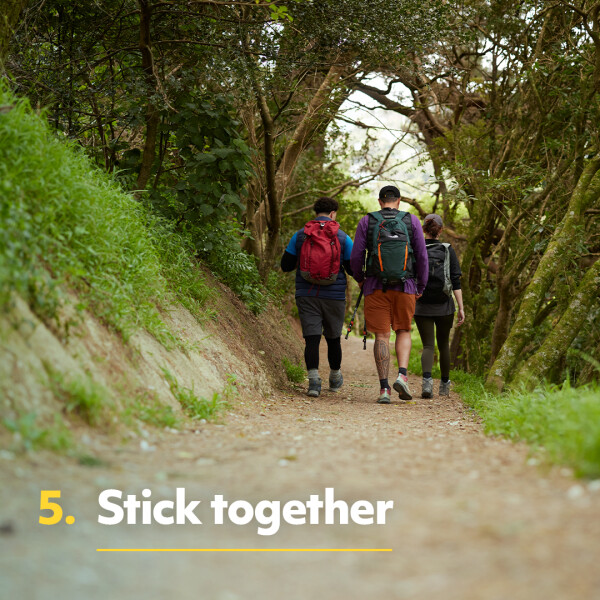
5. Stick together
- It’s important to stick together and wait for each other when the track goes in different directions, so no one takes a wrong turn.
- The best way to enjoy your experience in the outdoors and make it home safely is to look out for one another. Eat, drink and rest, stick with your group and make decisions together.
- While on the track, discuss how everyone is feeling, and if someone is struggling, have a break and consider changing plans.
- Make decisions together. It's important that all group members agree to changes in the planned route or transport arrangements.
Plan My Walk
Plan My Walk can help those planning their next adventure through each of these steps by supporting the search for a suitable track, checking track alerts, checking the forecast and weather alerts, building an interactive gear list; and sending all of this to group members and a trusted contact.
Visit Plan My Walk or download the app.
About 'Have a hmmm'
'Have a hmmm' is a constructive wero (challenge) to Aotearoa: Take action to avoid injury and keep yourself, your whānau, friends and community safe and well. ACC is starting by asking New Zealanders to do something easy: take a moment, 'Have a hmmm' and think of others before acting. Learn more about the campaign here.
MSC is proud to partner with ACC to deliver these important safety messages.
